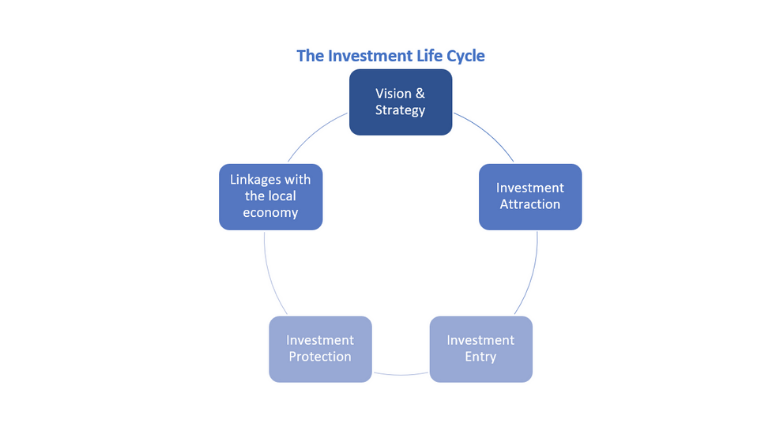[ad_1]
Foreign language learning places a lot of emphasis on the verbal aspects on how to say something. But, often in real life the non-verbal aspects are no less important, if not more important than the language itself. Language and culture are interrelated and being able to communicate effectively in a foreign language entails that the speaker knows not only the linguistic aspect of the language, but also how it should be used in context.
In a time when intercultural communication happens frequently, knowing the communication style of another country can be beneficial in many contexts. For example, a management staff who is sent to Japan to lead a team of Japanese staff, or a lawyer who is retained by a Japanese firm to handle the company’s international contracts, or businessmen and women who deal with the Japanese, or an ESL teacher for Japanese students. Communication, transaction, and relationship will be much easier when one has a good understanding of the other culture.
From the linguistic aspect, Japanese uses different structures to denote degrees of formality and social hierarchy. A very formal thank you would be doomo arigatoo gozaimasu, a plain thank you would be arigatoo, and a casual thank you would be doomo. Men and women sometimes use different words. It is very important to understand the social hierarchy in a given context to decide which structure should be used to prevent faux pas. The Japanese also treat the use of the second personal pronoun you in a different way. Japanese would use a title instead of using you directly, which is more respectful. In many settings, it is also rare to call someone simply by their first name. Office co-workers, for instance, would address their colleague with a title -san after the family name. Team members would address their manager as kacho and the company boss as syacho. And for people who belong to certain occupations, such as a teacher, a doctor, or a lawyer, they will be called sensei. Very important people should be addressed with the title -sama after their surname, which includes customers (o-kyaku-sama).
It is a norm to display emotional sensitivity to others and guard one’s emotional expressions. This makes Japanese people sometime appear to be expressionless to people from other cultures and create frustration because it makes it hard to read their facial expressions. Because Japanese speakers have been trained to be emphatic to other’s feelings, it makes it hard for them to say no directly to refuse someone. Sometimes, Japanese would say yes to avoid upsetting the other person. In order to avoid confusion, foreigners need to be able to recognise cues which mean no. Japanese are also reluctant to receive compliments. This is because the society values group spirit and to stand out as an individual is socially awkward. Hence, when a Japanese is complimented, he or she would respond with humility, such as iie (literally meaning no), showing that it is no big deal and is not worth a mention. This modesty is known as enryo. Sometimes when talking to foreigners, Japanese would still indulge in this practice and risk sound lacking self-confidence.
Using Edward T. Hall’s concept, Japanese would be categorised as a high-context culture, a communication style influenced by the closeness of human relationships, well-structured social hierarchy, and strong behavioural norms. Communication is ‘indirect, ambiguous, harmonious, reserved, and understated’. Speakers are seldom interrupted. Internal meaning is embedded and the listener is expected to be able to read between the lines. Such a practice renders machine-based translation of limited value. There is tatemae, an individual explicit statement, and then there is honne, what an individual is really going to do. When a native Kyoto asks if a guest wants to eat bubuzuke (rice in green tea broth), what it really means is that the guest is being politely asked to leave.
Using Lewis’ cultural categories of communication, Japanese are categorised as reactives or ‘listening cultures’. Reactives are ‘courteous, outwardly amiable, accommodating, compromising, and good listeners’. This is in contrast with multi-actives who are impulsive and emotional, often interrupt and are uncomfortable with silence.
When comparing the Japanese culture and the Australian and the American cultures using Hofstede’s 6D model, the biggest difference is the long-term orientation dimension where Japan scores a high 88 while Australia and America score a low 21 and 26 respectively. The second biggest difference is the individualism dimension where Japan score a low 46 while Australia and America score a high 90 and 91 respectively. What this implies when a Japanese firm is working with a foreign partner is that they will weigh the long-term relationship factor more than the profit itself, which is quite a contrast to the American culture. The Japanese also adopt a group decision making process known as ringi. The process starts from the bottom and gradually reach the top. Consensus must be reached from the group level. Since decision making process must go through a group, the process will take some time. An American executive commented, ‘It takes the Japanese five years to make a decision but they implement it overnight. We make the decision overnight, then spend five years implementing it.’
A notable characteristic of Japanese communication style is the use of prolonged silence during a dialogue. As Japanese do not like arguments, in order to maintain social harmony and to prevent the other party from losing face, they prefer to be silent to show a negative response. The prolonged silence could cause the non-Japanese conversation partner to feel uncomfortable. A study by John L. Graham shows that silent periods occur more frequently in Japanese negotiations than that of any other cultures, one for as long as 40 seconds, and can be used as an effective bargaining tactic. Japanese dislike the use of verbal aggression and silence is used in a strong position as an aggressive, persuasive tactic. However, this gesture could be easily misinterpreted as a sign of weakness and acceptance. Caution must be used in generalising the communication style of the Japanese. Japanese who have lived in the United States, for instance, would adapt to the American communication style.
Japanese value sincerity. Attempts by foreigners to master Japanese are thus seen as willingness to establish mutual trust and close working relationships. According to Erin Meyer, a professor at INSEAD, there are two ways to build trust, cognitive versus affective. Cognitive trust is task based. Affective trust is relationship based and develops gradually through friendship. American culture is an example of cognitive trust culture, Japanese culture on the other hand is an example of affective trust culture. Because of this, it is important to socialise with the Japanese outside office hours, show interests in their personal life, and exchange gifts.
















